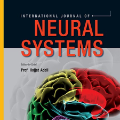This work includes all the technical details of the Sequential Principal Curves Analysis (SPCA) in a single document. SPCA is an unsupervised nonlinear and invertible feature extraction technique. The identified curvilinear features can be interpreted as a set of nonlinear sensors: the response of each sensor is the projection onto the corresponding feature. Moreover, it can be easily tuned for different optimization criteria; e.g. infomax, error minimization, decorrelation; by choosing the right way to measure distances along each curvilinear feature. Even though proposed in [Laparra et al. Neural Comp. 12] and shown to work in multiple modalities in [Laparra and Malo Frontiers Hum. Neuro. 15], the SPCA framework has its original roots in the nonlinear ICA algorithm in [Malo and Gutierrez Network 06]. Later on, the SPCA philosophy for nonlinear generalization of PCA originated substantially faster alternatives at the cost of introducing different constraints in the model. Namely, the Principal Polynomial Analysis (PPA) [Laparra et al. IJNS 14], and the Dimensionality Reduction via Regression (DRR) [Laparra et al. IEEE TGRS 15]. This report illustrates the reasons why we developed such family and is the appropriate technical companion for the missing details in [Laparra et al., NeCo 12, Laparra and Malo, Front.Hum.Neuro. 15]. See also the data, code and examples in the dedicated sites http://isp.uv.es/spca.html and http://isp.uv.es/after effects.html
翻译:这项工作包括在一份单一文件中包含序列本曲线分析的所有技术细节。 SPCA是一种不受监督的非线性和不可逆特征提取技术, 被识别的曲线特征可以被解释为一组非线性传感器: 每个传感器的响应是投射到相应的特性。 此外, 这项工作可以很容易地根据不同的优化标准调整; 例如, 信息、 最小化、 装饰; 选择测量每个曲线特征距离的正确方法。 尽管在 [Laparra 和 Al. NeuralComp.12] 中提议, 并显示在 [Laparra 和 Malo Frontiors Hum. Neuro. 15] 中以多种方式工作, SPCA框架的原始根源在于[Malo和Gutierrez 网络 06]的非线性 ICA算法。 稍后, 五氯苯非线性一般化的SPCA哲学来源于在模型中引入不同限制的成本。 即: 首席多线性分析(PIROA) [LA/Real real developal deformal) [Lal development the 15 Restal developmental develop sal deal. reportal.




